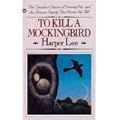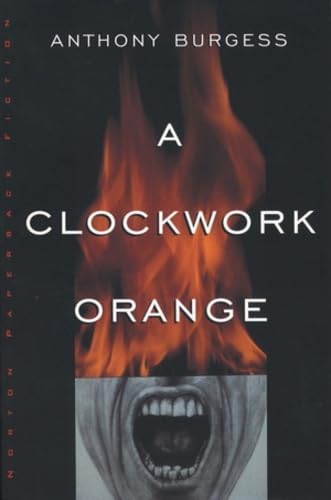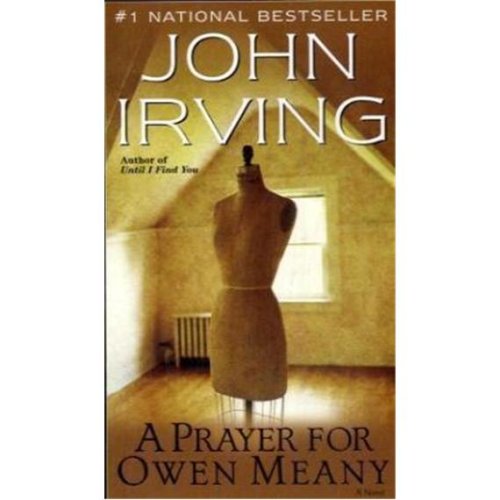So that you may get to know us better, it’s The Millions Quiz, yet another occasionally appearing series. Here, as conceived of by our contributor Emily, we answer questions about our reading habits and interests, the small details of life that like-minded folks may find illuminating, and we ask you to join us by providing your own answers in the comments or on your own blogs.
Today’s Question: What was the book that started it all for you?
 Edan: According to my mother, I could read novels before I was potty trained. I’m not contesting that mythology, but the first time I remember being totally enamored with a book was later than that, at about age 8, when my mother bought me Anne of Green Gables by L.M. Montgomery. I’d read and liked other books – The Babysitters Club series, of course, and nearly everything by Judy Blume – but Anne of Green Gables felt more magical, and more mature. It took me to a faraway world, specifically, to Prince Edward Island in the early 20th century, and used big, unfamiliar words (I remember asking my mom what the word “abundance” meant on the ride home from the bookstore – I had a small tingling of fear – or was it excitement? – that this book would be difficult). I loved that the story’s protagonist had carrot red hair, and, even better, freckles like mine! I took to calling people “kindred spirits” and wondering if I could pull of puffed sleeves. I spent the next couple of years reading Montgomery’s entire oeuvre, and I started taping the following warning into my inside book covers:
Edan: According to my mother, I could read novels before I was potty trained. I’m not contesting that mythology, but the first time I remember being totally enamored with a book was later than that, at about age 8, when my mother bought me Anne of Green Gables by L.M. Montgomery. I’d read and liked other books – The Babysitters Club series, of course, and nearly everything by Judy Blume – but Anne of Green Gables felt more magical, and more mature. It took me to a faraway world, specifically, to Prince Edward Island in the early 20th century, and used big, unfamiliar words (I remember asking my mom what the word “abundance” meant on the ride home from the bookstore – I had a small tingling of fear – or was it excitement? – that this book would be difficult). I loved that the story’s protagonist had carrot red hair, and, even better, freckles like mine! I took to calling people “kindred spirits” and wondering if I could pull of puffed sleeves. I spent the next couple of years reading Montgomery’s entire oeuvre, and I started taping the following warning into my inside book covers:
This book is one thing
My fist is another
You take this
And you’ll get the other
 Andrew: During my senior high school year, on an otherwise unremarkable school night, my English teacher – an inspiring educator named Robert Majer – took the entire class out to Zappi’s Pizza, where, on a large screen, Stanley Kubrick’s film adaptation of Anthony Burgess’ A Clockwork Orange leapt off of the wall, tossed aside plates of steaming pizza, and grabbed each one of us by the throat, commanding our attention. The next day, in a private moment following a discussion of the film, Mr. Majer brought out his own copy of the novel (we weren’t actually studying the novel in the class) and lent it to me.
Andrew: During my senior high school year, on an otherwise unremarkable school night, my English teacher – an inspiring educator named Robert Majer – took the entire class out to Zappi’s Pizza, where, on a large screen, Stanley Kubrick’s film adaptation of Anthony Burgess’ A Clockwork Orange leapt off of the wall, tossed aside plates of steaming pizza, and grabbed each one of us by the throat, commanding our attention. The next day, in a private moment following a discussion of the film, Mr. Majer brought out his own copy of the novel (we weren’t actually studying the novel in the class) and lent it to me.
There had been novels that floored me before (Salinger’s Catcher in the Rye affected me as strongly as it did countless other youths) and in a matter of months I would immerse myself in American masters from Hemingway to Irving, by way of Vonnegut, not to mention all those nineteenth-century Russians. But the singular experience of reading Anthony Burgess, who contorted and then caressed the English language, made a huge impression on me and left me with a feeling that anything could be achieved with language. And that fiction is an expansive and limitless medium.
 Emily: The book that started it all for me was Little Black, A Pony, by Walter Farley. I, aged three, woke my parents up sobbing with the anguished announcement “I can’t read!” Thanks to my mom and trusty Little Black, I am now an accomplished reader (and a competent horsewoman). While this 1961 children’s book has recently been translated into Navajo and re-illustrated by Baje Whitethorne, Jr., the one I knew and loved had a little very blond and very crew-cutted Hardy Boys looking boy on the cover, and this original edition is still available for about five bucks (including shipping) through Amazon Marketplace. Not for the last time (ehem, cat dissertation), I found myself entranced by the animal’s eye-view.
Emily: The book that started it all for me was Little Black, A Pony, by Walter Farley. I, aged three, woke my parents up sobbing with the anguished announcement “I can’t read!” Thanks to my mom and trusty Little Black, I am now an accomplished reader (and a competent horsewoman). While this 1961 children’s book has recently been translated into Navajo and re-illustrated by Baje Whitethorne, Jr., the one I knew and loved had a little very blond and very crew-cutted Hardy Boys looking boy on the cover, and this original edition is still available for about five bucks (including shipping) through Amazon Marketplace. Not for the last time (ehem, cat dissertation), I found myself entranced by the animal’s eye-view.
 Emre: You pose a difficult question and at best I have 15 different answers. Agatha Christie and Jules Verne were my elementary school darlings, but I really turned the corner summer of junior year in high school with an unexpected choice that is brilliant in its simple collage of people, geography, life, death, love and suffering. I was high on Kemal Tahir’s Yorgun Savascı, which we had read during the school year. My father was quick to seize on my excitement about this novel, which told the story of the resistance against the occupying Allied Powers in post-World War I Istanbul and the budding independence movement in Anatolia. So, my dad casually suggested I leaf through Nazim Hikmet’s Human Landscapes from My Country. At the time a copy of Hikmet’s epic rested in our bathroom, atop the laundry machine. (Yes, laundry machines are often found in bathrooms in Turkish homes, to me it was the most normal thing growing up. And, yes, newspapers and assorted literature were always abundant in our domestic restroom.)
Emre: You pose a difficult question and at best I have 15 different answers. Agatha Christie and Jules Verne were my elementary school darlings, but I really turned the corner summer of junior year in high school with an unexpected choice that is brilliant in its simple collage of people, geography, life, death, love and suffering. I was high on Kemal Tahir’s Yorgun Savascı, which we had read during the school year. My father was quick to seize on my excitement about this novel, which told the story of the resistance against the occupying Allied Powers in post-World War I Istanbul and the budding independence movement in Anatolia. So, my dad casually suggested I leaf through Nazim Hikmet’s Human Landscapes from My Country. At the time a copy of Hikmet’s epic rested in our bathroom, atop the laundry machine. (Yes, laundry machines are often found in bathrooms in Turkish homes, to me it was the most normal thing growing up. And, yes, newspapers and assorted literature were always abundant in our domestic restroom.)
One evening I took my seat on the porcelain throne and picked up Human Landscapes from My Country – never to put it down. My legs went numb and I forgot where I was as I dug into Hikmet’s verses, which in plain yet moving terms paint a startling picture of Turkey and its people. Starting with a traveler drinking at Haydarpasa, Istanbul’s second primary train station on the Asian side, the 17,000-line epic chronicles landscapes and people, wars and the birth of a nation. Don’t get thrown off by that latter part. Hikmet was a communist who, to the shame of the republic he loved so much, spent 12 years behind bars because of his political beliefs, eventually fleeing to the USSR. Naturally, he inserted his struggles with the republic’s authoritarian tendencies and his time in prison into Human Landscapes from My Country. But the beauty of Hikmet is his humanism, his ultimate love and trust in the brotherhood of all men. The verses reflect his deep-seated belief in people, who appear from all walks of life to provide a perfect landscape of Turkey from the bourgeois to peasants, politicians, factory workers, war veterans, struggling mothers and hopeless romantics. I still pick up Human Landscapes from My Country to reaffirm my own faith in people – it never ceases to make me weep or laugh with sadness and joy.
 Garth: True story: when I was in second grade, and in my second year of reading “chapter books,” I found a copy of To Kill A Mockingbird in a ballfield dugout after pee-wee league practice one day. That cryptic title haunted me, and when my mother was teaching the book to her high school class a couple of years later, I asked if I could read it, too. She agreed, provided I would promise to read it again when I was in middle school, again in high school, and again in college. It would mean something different to me each time, she said. (Years later, when I attempted Middlemarch, she would extract a similar promise… the difference being that I was actually in college at that point.) I complied with my mom’s wishes, but nothing came close to that very first reading, which may have taken me two months. The possibilities of books (to be complex, to be layered, to communicate things the characters themselves don’t know) had grown by an order of magnitude or so. To paraphrase Bruce Springsteen, and with apologies to Beverly Cleary (whom I still love): “It was bye-bye, Ramona Quimby… we were airborne.”
Garth: True story: when I was in second grade, and in my second year of reading “chapter books,” I found a copy of To Kill A Mockingbird in a ballfield dugout after pee-wee league practice one day. That cryptic title haunted me, and when my mother was teaching the book to her high school class a couple of years later, I asked if I could read it, too. She agreed, provided I would promise to read it again when I was in middle school, again in high school, and again in college. It would mean something different to me each time, she said. (Years later, when I attempted Middlemarch, she would extract a similar promise… the difference being that I was actually in college at that point.) I complied with my mom’s wishes, but nothing came close to that very first reading, which may have taken me two months. The possibilities of books (to be complex, to be layered, to communicate things the characters themselves don’t know) had grown by an order of magnitude or so. To paraphrase Bruce Springsteen, and with apologies to Beverly Cleary (whom I still love): “It was bye-bye, Ramona Quimby… we were airborne.”
 Max: As a young insomniac, I read myself to sleep each night, and it turned out to be habit forming. My shelves bulged with Beverly Cleary, The Hardy Boys, and Laura Ingalls Wilder’s Little House series. I even discretely dipped into The Babysitters Club to see if I could get some intelligence on how the other half lived. (“They’re my sister’s!” I exclaimed to friends if I ever carelessly left a copy in plain sight.) Round about 7th grade I started raiding my parents’ large and haphazardly curated library. There were quite a few false starts, but one day I dipped into John Irving’s A Prayer for Owen Meany and never looked back. It made me immediately realize that all the books I had been reading were “kids” books, and opened my eyes, ultimately, to the mind-bending (especially to a 12-year-old) possibilities of fiction. From there I read all of Irving, Kurt Vonnegut, and T.C. Boyle, acquired the hobby of haunting local bookshops, and was on my way.
Max: As a young insomniac, I read myself to sleep each night, and it turned out to be habit forming. My shelves bulged with Beverly Cleary, The Hardy Boys, and Laura Ingalls Wilder’s Little House series. I even discretely dipped into The Babysitters Club to see if I could get some intelligence on how the other half lived. (“They’re my sister’s!” I exclaimed to friends if I ever carelessly left a copy in plain sight.) Round about 7th grade I started raiding my parents’ large and haphazardly curated library. There were quite a few false starts, but one day I dipped into John Irving’s A Prayer for Owen Meany and never looked back. It made me immediately realize that all the books I had been reading were “kids” books, and opened my eyes, ultimately, to the mind-bending (especially to a 12-year-old) possibilities of fiction. From there I read all of Irving, Kurt Vonnegut, and T.C. Boyle, acquired the hobby of haunting local bookshops, and was on my way.
So, tell us, in the comments or on your own blog: What was the book that started it all for you?











